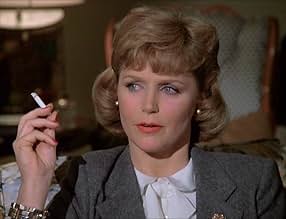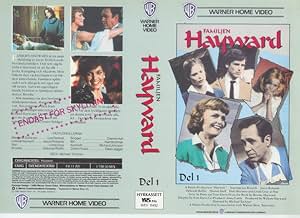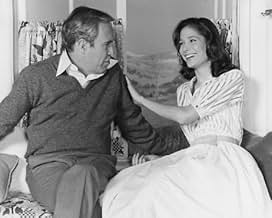Based on autobiography of Brooke Hayward, daughter of famous Broadway producer Leland Hayward and actress Margaret Sullavan, who grows up in the glamorous, cruel and emotionally unstable wor... Read allBased on autobiography of Brooke Hayward, daughter of famous Broadway producer Leland Hayward and actress Margaret Sullavan, who grows up in the glamorous, cruel and emotionally unstable world of her parents.Based on autobiography of Brooke Hayward, daughter of famous Broadway producer Leland Hayward and actress Margaret Sullavan, who grows up in the glamorous, cruel and emotionally unstable world of her parents.
- Nominated for 3 Primetime Emmys
- 3 nominations total
Photos
Storyline
Did you know
- TriviaAccording to star Lee Remick on Margaret Sullavan," I loved playing her. She was so crazy - with the assurance of her own sanity running through everything she did. She was an irrepressible flirt - and had an affair with any man she felt like."
- GoofsThe story spans from the early 1940s to the early 1970s. However, throughout the film, signage, cars, appliances and many other identifying factors from the late 1970s, when it was actually filmed, are visible.
- ConnectionsFeatured in The 32nd Annual Primetime Emmy Awards (1980)
Featured review
One thing about Brooke Hayward and her memoir. She told it all in terms of her incompatible parents who had a great passionate love, maybe too much so. Haywire is both the title of the memoir she wrote and the title of this film. Deborah Raffin plays Brooke Hayward through whose eyes we see the story of Margaret Sullavan and Leland Hayward.
To be sure the film is tempered somewhat by the fact that in 1980 many of the characters in their lives were still around. Both of Sullavan's former husbands were still around, Henry Fonda and William Wyler, as was her four time film co-star James Stewart. None of them appear here though they do get passing mention. Maybe in another generation the story can be retold.
It's obvious that this was meant as a two part film. The first half deals with Margaret and the second half with Leland. Maybe it should have been dealt with that way. I think the first half with Margaret is a bit stronger.
Lee Remick is Margaret Sullavan who tried terribly hard to balance marriage and family and a career. She left Hollywood for good to concentrate on the stage and family, but she was touring so much that the kids were left to their own devices. As Remick portrays her, Sullavan was a woman with an iron will who had a vulnerable spot when it concerned her kids.
Leland Hayward as portrayed by Jason Robards, Jr. is every bit the free wheeling hedonist he was in real life. He was charismatic and dynamic, he had to be otherwise he could never function in an industry that relies a lot on bluff, bluster and charm. Hayward was married several times, but his kids were with Sullavan and she really was the love of his life.
The first half is done in flashbacks from Sullavan's death in 1960 either intentional or accidental with a dose of sleeping pills. She loved acting, but hated all the pretense that went with show business. Hayward as a producer was all of that and he knew the value of the kind of publicity Margaret loathed. One of many things that drove them apart. The second half is in flashbacks from Hayward's death in 1971.
Raffin's two siblings are Hart Bochner and Dianne Hull. Bochner was a withdrawn kid who was underestimated by his father. Hull was the tragic Bridget Hayward who was her own tragic story. Hull may take the acting honors in a cast that all perform well.
Quite a family the Hayward/Sullavan bunch. There a game of six degrees of separation unto themselves. Look up both Hayward and Sullavan and see what I mean. Quite a family, quite a story.
To be sure the film is tempered somewhat by the fact that in 1980 many of the characters in their lives were still around. Both of Sullavan's former husbands were still around, Henry Fonda and William Wyler, as was her four time film co-star James Stewart. None of them appear here though they do get passing mention. Maybe in another generation the story can be retold.
It's obvious that this was meant as a two part film. The first half deals with Margaret and the second half with Leland. Maybe it should have been dealt with that way. I think the first half with Margaret is a bit stronger.
Lee Remick is Margaret Sullavan who tried terribly hard to balance marriage and family and a career. She left Hollywood for good to concentrate on the stage and family, but she was touring so much that the kids were left to their own devices. As Remick portrays her, Sullavan was a woman with an iron will who had a vulnerable spot when it concerned her kids.
Leland Hayward as portrayed by Jason Robards, Jr. is every bit the free wheeling hedonist he was in real life. He was charismatic and dynamic, he had to be otherwise he could never function in an industry that relies a lot on bluff, bluster and charm. Hayward was married several times, but his kids were with Sullavan and she really was the love of his life.
The first half is done in flashbacks from Sullavan's death in 1960 either intentional or accidental with a dose of sleeping pills. She loved acting, but hated all the pretense that went with show business. Hayward as a producer was all of that and he knew the value of the kind of publicity Margaret loathed. One of many things that drove them apart. The second half is in flashbacks from Hayward's death in 1971.
Raffin's two siblings are Hart Bochner and Dianne Hull. Bochner was a withdrawn kid who was underestimated by his father. Hull was the tragic Bridget Hayward who was her own tragic story. Hull may take the acting honors in a cast that all perform well.
Quite a family the Hayward/Sullavan bunch. There a game of six degrees of separation unto themselves. Look up both Hayward and Sullavan and see what I mean. Quite a family, quite a story.
- bkoganbing
- May 11, 2017
- Permalink
Details
Contribute to this page
Suggest an edit or add missing content




























